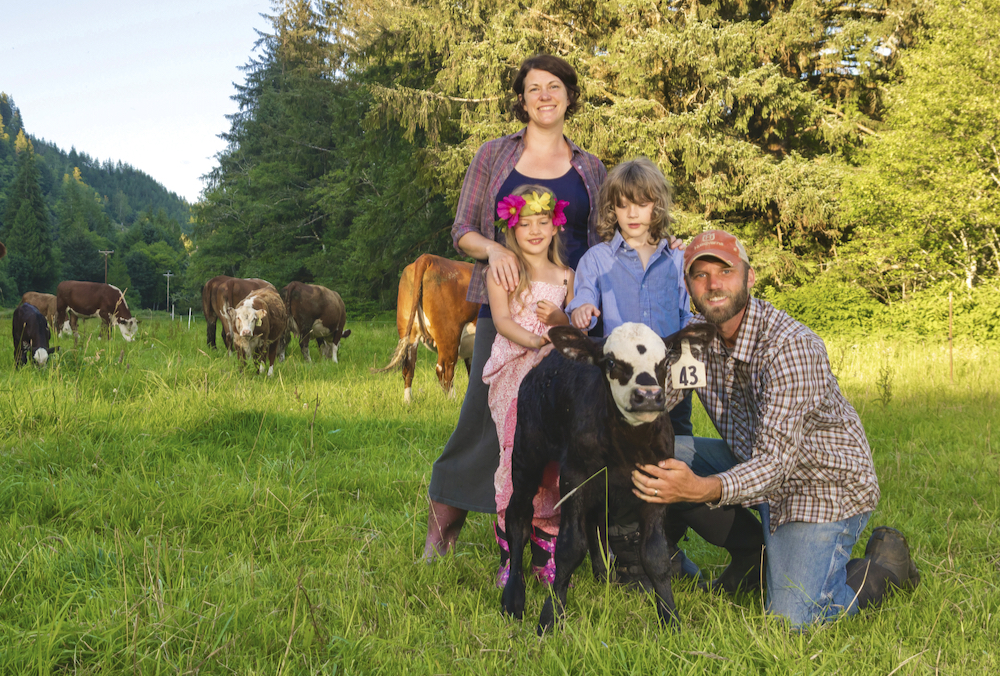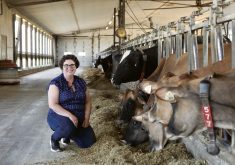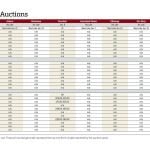This is not a typical Country Guide story. It couldn’t be. Jared Gardner didn’t start out as a farmer. It’s just that every step of his life has moved him inexorably and sometimes surprisingly towards not only building up a livestock farm but also a regional food system that promises to put more money in farmers’ pockets in his community.
Actually, Gardner started out as a linguistics and anthropology student in university, studying religions and cultural change. But don’t let that turn you off because it made him indulge a passion for travel that took him to South America, New Guinea, the South Pacific, New Zealand and Australia.
Later, Gardner was persuaded he needed a “real” career, and he went into finance and real estate. But then, with the birth of his son in 2008 and the financial crisis, he decided to change direction. So this time, by combining his financial savvy and his insights from anthropology and travel, he formed an economic development consulting company, Equity Design.
Read Also

Building a farm legacy that outlasts you
A farm’s legacy isn’t just about the land; it’s also about the values and the impact that continue long after the current owner has stepped away.
I know … you can make a job out of that? But Gardner had learned a lot about markets and how money gets moved around and taken out of rural communities. “Urban populations are dependent on food and resources from rural areas, but much of that money leaves through the value chain,” he says. “I started to look at community development through an economic development lens. How do we keep money local, how do we not just be funnels of real wealth towards the money centres?”
The trouble with capital
Gardner soon ran into a paradox.
“Small farmers especially were saying they couldn’t get access to capital, and my bank friends were saying there was no problem for anybody who had a viable business,” he says.
“I thought, there’s probably some truth in-between there, and that sent me down the path of looking at what are the barriers to economic viability in our food system.”
Interacting with farmers, buying all their food locally from them, and gaining a better understanding for the way the food system works, ultimately led him and his wife, Hilary Foote, into farming where they identified a gap on the protein side for ethically raised, grass-fed meat, and had the opportunity to buy 100 acres of land near the coast in Oregon.
Their knowledge and experience to that point had prepared them for the farming life. “I come from a finance background, and my wife came from renewable energy development and policies, and we were connected in the food world before we became farmers,” Gardner says. “I like to connect with people, so it was easy for us to build community.”
This led to another discovery. “When you dive deep in farming, oftentimes your head’s down, you’re doing the work and there’s really not much time to build community. But all too often community is what it takes to pull through hard times physically, emotionally, and in a lot of ways, financially.”
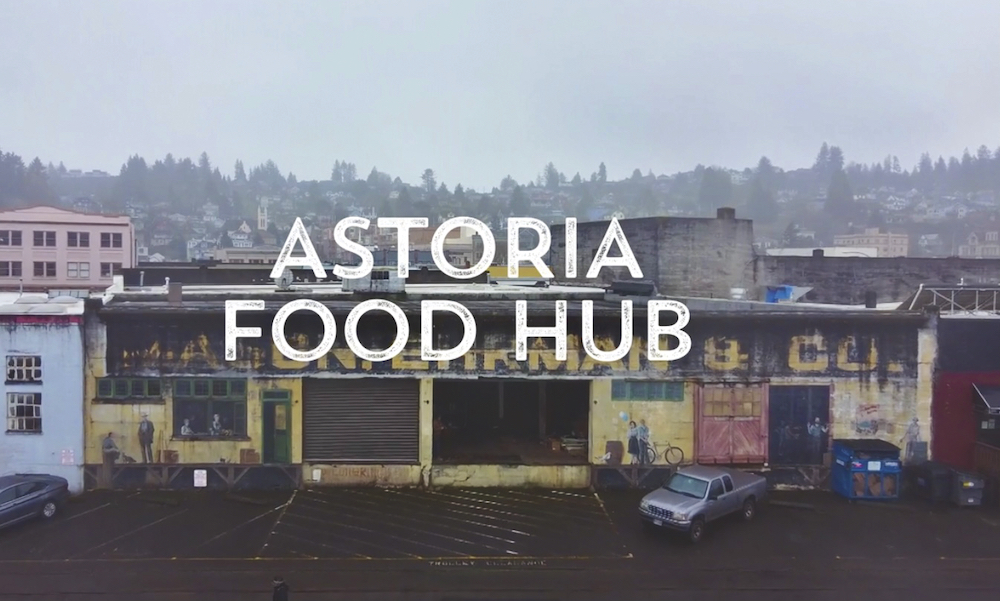
Keeping money local
Gardner is passionate about keeping money in rural communities and about building resiliency into localized systems, something he first began exploring in depth before he even started farming himself. In 2005, he got involved in the local economy movement and met a lot of people looking into how economic systems hollow out small communities. While still working in finance and helping people do financial planning, Gardner had begun sitting down with clients to help them identify where their money was actually going.
“Almost every interest dollar people pay on their house mortgage leaves the community, and what they have left goes on food, utility bills, fuel, and even most of that money leaves the community,” he argues.
When he settled on the farm and began looking at the food value chain, he recognized opportunities to do things a different way.
“If you look at that value chain, the money goes to the next person, the next person, the next person … yet the farmer could handle most of those (steps),” he says.
As an example, when a local restaurant asked Gardner to provide it with 15,000 pounds of ground beef a year — more than he wanted to ship them himself — he approached five other local producers who were selling to the auction mart.
“There’s a lot of money being taken out of our communities before the meat comes back,” Gardner says. “That’s crazy when we can just do it all here and keep those dollars in our community.”
The food hub concept
Tracing those food dollars has led Gardner and a group of community members to create elements of a local food hub. Indeed, the biggest driver for the Astoria Food Hub turned out to be cold storage. Gardner was driving a four-hour round trip to pick up beef from a cold storage facility, as were other producers in the area, as well as local fishermen who truck their catch back and forth to Portland. Soon they realized that if they pooled their resources, it would make business sense to invest in their own expensive, walk-in cold storage as part of the food hub concept.
Then they realized, local distribution is part of the jigsaw too. Too often, producers were buying trucks that were passing each other on the way to city markets, or one would be waiting in line behind another to make a drop-off.
“So, we thought, why aren’t we doing this together?” Gardner says. “We started trying to figure it out and a couple of months ago, launched a local food delivery system that supports 50 small producers and is covering over 100 miles of coastline, and is co-located with the cold storage.”
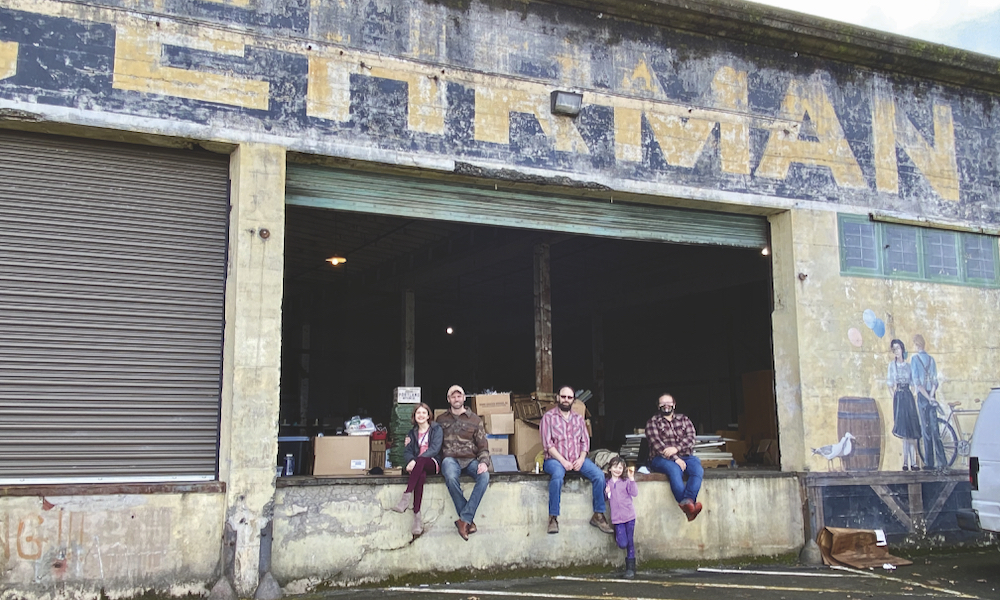
The first phase of the food hub, the cold storage and distribution service along with offices and a retail outlet run by a non-profit, should be fully operational by the end of the year, with more components to follow in 2022. The hub will eventually have commercial kitchens where people can come to make their food products, with packaging and cold- and dry-storage areas for rent, plus access to the delivery service if they want it. There will also be a restaurant and retail food service in the building where people can sample and purchase the food that local farmers are producing.
“It’s a marketing mouthpiece, so we can say ‘here’s an up-and-coming pork producer who has amazing flavour’ because not every food producer has social media, or video experience or logo and branding support, let alone cold-storage distribution,” Gardner says. “If we can create that through a hub, and do it at a price point that gives access to new and regional food businesses, then everybody wins.”
Interest in the community
For financing the venture, they have turned to a private commercial lender, Steward, that specializes in raising funds for regenerative, human scale farms, ranches, fisheries and other agricultural or food businesses. (For more information about Steward check out its website at: gosteward.com.)
“We wanted to use a lender so that our neighbours and our community supporters could be part of the loan. We’re going to pay somebody interest; I’d rather it be a neighbour than a bank that may or may not care about our community,” Gardner says.
There were a few reasons why going to traditional lenders to fund the food hub didn’t meet with any success, as Gardner had anticipated.
“I knew they’d say no because there’s a few challenges, and banks are not in the business of taking risk, they’re in the business of controlling risk,” Gardner says. “One of the challenges was development, we’re going to buy a building and have to put money into it. So, lots of things can go wrong with development, which is why we spent 18 months getting our ducks in a row, key financial supporters lined up, and all the materials costed out to make sure we could do this. And anything to do with food, lenders are really scared about right now with COVID.”
The group, as a new development team that hadn’t worked together before, did exhaustive risk analyses that proved invaluable when they finally sat down and spoke with Steward, which to that point had mainly loaned directly to farmers and had never funded a loan for food system infrastructure of this scale and scope before.
“Since we already identified the risk, and came to them with our solutions they were way more comfortable … they could see we knew what we were getting into,” Gardner says. “We also had 60 per cent of the tenants lined up, which made a huge difference, because it’s not as speculative as it might seem, and I am more excited about paying interest to 165 participating lenders in our community than to the banks.”
Steward was able to raise $700,000 through its platform in just two weeks for the Astoria Food Hub project. The average individual loan participant in the project has put in around $2,500, but there are people who have participated way more and others who have put in as little as $100. The Astoria Food Hub’s loan from Steward is locked in for five years at a seven per cent interest rate with a balloon payment due when the founders plan to refinance and pay all the individual lenders back in full.
“It feels equitable for people to get paid something and get their money back,” Gardner says. “That feels better than a donation or a zero-interest loan. It feels like they have got skin in the game, and we are honouring that they are contributing.”
Truly invested
A unique aspect of the project that’s hugely attractive to its participating lenders is that they believe in what they are backing and that they will be able to see, touch and taste the results of their financial support, something that traditional investment portfolios can’t offer.
“People are saying ‘I can’t wait to come get a meal, or have a beer, or come buy something at this food hub,’ so we’re bringing customers who are ready to go as soon as we open the doors, because they’ve invested in our mission and they get to taste and experience it, and that’s missing in the market,” Gardner says.
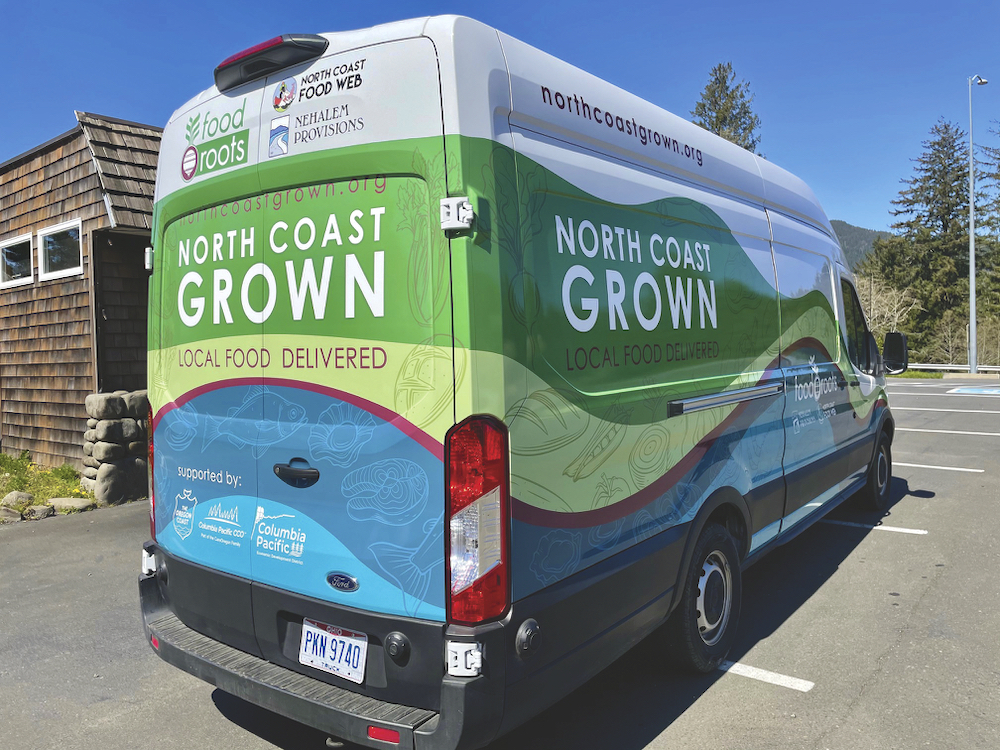
When Steward puts out an offering for individual lenders in a farm project, 20 to 25 per cent of the loan amount is first raised from the farmers’ own network, but in the case of the food hub it was 60 per cent. Gardner credits a lot of that interest to being in the right place at the right time with the right concept.
“Americans haven’t forgotten that there were bare shelves a year ago, that people couldn’t get meat and the prices were jumping all over the place,” Gardner says. “That scared people, and it was the perfect time to start talking about how the reason it breaks is because of these structural issues, and that we’re trying to build solutions to them.”
The way to do that is to de-centralize and distribute, says Gardner, who envisions a network of interconnected local food hubs that aggregate and then move products scaled to fit the communities they serve, and current trends seem to suggest that will be a successful model.
It’s a collaborative model that requires a level of co-operation among farmers that many haven’t been used to, but the value is huge when they see how working together benefits everyone.
“Farmers often spend millions to get $100,000 or $200,000 net profit at the end of the year, but it’s possible to do that on a few hundred thousand if you’re not giving up every dollar along the way,” Gardner says. “I’m encouraged by the co-operation among farmers; it’s really nice to sit and open the books with people and share where we buy our feed from, what we do and show how the numbers play out. Because if we’re not talking about that side too, we’re not helping each other.”
Now, Gardiner believes the model can be sized to fit any community or region, creating higher-value commercial opportunities that retain profits in the community while meeting the needs of a local customer base.
“We’re selling direct, and we can out-compete on flavour because of our unique pastures, but we can also compete on price with wholesale distributors, and that tells me we’re not far from closing this loop and reducing our dependence on big, consolidated meat packing plants,” Gardner adds. “We have to scale up what we’re doing to some degree, and this is not going to change overnight, but we’re not trying to do everything for everybody, we’re just finding what works well for us and our community.”
Gardner and Foote live in an area where there are a lot of family dairy farms that aren’t able to attract kids back to the operation, and they are hoping that through using a different model of farming they may be able to get their own children; 11-year-old Genevieve, 13-year-oldDillon and 23-year-old Kestrel, excited about the entrepreneur side of farming versus the hard work side. They recently purchased bees from a retiring honey producer and are encouraging the kids to care for them and have some fun selling the honey and candles they produce.
“We have to get away from this narrative of farms as all work, no play, live poor, die rich,” Gardner says. “If you build a real business, you can make a real livelihood.”
Grow from within
Lending a few acres or an old tractor to a new farmer can make all the difference
The husband and wife team of Jared Gardner and Hilary Foote have a different vision and model for their farm, Nehalem River Ranch on the north coast of Oregon. Gardner calls it a nested food system, where they are encouraging multiple producers to come in and use their property.
“Access to land is a real issue, and then access to equipment,” Gardner says. “How do you get your foot in the door to buy land in the first place? The vegetable farmer who needs five acres to do direct sales would have to buy 80 to be able to get good-quality soils out here because of our zoning policies that encourage larger tracts of farmland, or buy expensive rural residential properties. Knowing this, we’ve created an informal co-op. We’ve got equipment, so why should my farm hand who does goats, have to get a tractor when he can use mine to load up his barn with grass or hay?”
The farm currently is home to a goat producer, three honey bee producers, a vegetable farm, flower farm and compost business, and at the time of writing Gardner was about to meet with a woman about mentoring her nephew, who has Downs Syndrome, to raise chickens on the farm too.
“He comes out every Friday to work with the pigs and we thought why can’t we build this chicken egg-laying business for him; he can own it and run it with guidance,” Gardner says. “We have the land, we have the equipment, we have the market, so that’s where we’re trying to stack things and also think about cross-selling to the people who want good local meat who also want eggs, honey and goat cheese.”


